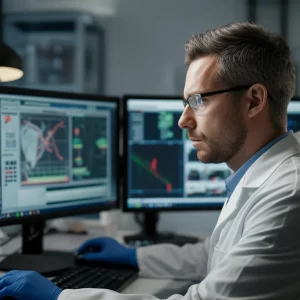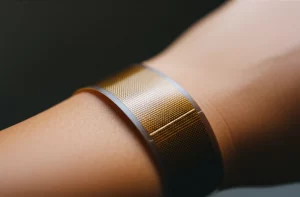AI’s New Eyes: Boosting Object Detection for Visually Impaired
Life throws curveballs, right? And for folks who are visually impaired, those curveballs can be literal obstacles – navigating a busy street, finding your way indoors, even just spotting something important nearby. It’s a daily challenge that many face, and honestly, it’s something we should all be thinking about how to make easier.
Traditional aids like canes are essential, of course, but the world is dynamic! Potholes appear, vendors pop up, and let’s not even start on confusing indoor layouts or those tricky social cues you might miss. Relying just on a cane or simple GPS isn’t always enough in our fast-changing environments. We need something smarter, something that can truly ‘see’ and understand the world around them in real-time. That’s where technology, especially the kind that’s getting super smart with data, comes into play. We’re talking about things like computer vision and, more specifically, object detection.
Object detection is basically teaching computers to look at an image or video and say, “Hey, I see a car here, a person there, and maybe a dog over there!” It puts a little box around them and tells you what they are. Pretty cool, right? And when you apply this to helping visually impaired people, the potential is immense. Imagine a system that can alert you to obstacles, identify important landmarks, or even help you read signs. It could seriously boost independence and safety.
Now, while there are already some amazing assistive technologies out there, there’s always room for improvement. Sometimes they struggle in complex environments, or they might be a bit slow, or maybe they aren’t great at spotting smaller things. Plus, making these systems lightweight enough for wearable devices is a whole other puzzle. That’s why we’ve been diving deep into this area, exploring how the latest advancements in deep learning and optimization can really make a difference. We wanted to build something that’s not just good, but really good at seeing the world for those who can’t.
And that brings me to something exciting we’ve been working on: a novel system we’ve dubbed the ODSDP-ADLMSSO. (Yeah, I know, quite the acronym! Let’s just call it our ‘Smart Vision System’ for now, shall we?). The main goal here is crystal clear: make object detection for visually challenged people way more accurate and reliable. We’ve put together a few powerful pieces of technology to make this happen.
Cleaning Up the View: Pre-processing
First things first, when you’re dealing with images, they can sometimes be a bit ‘noisy’. Think of it like static on an old TV screen, but in a picture. This noise can mess with the AI trying to figure things out. So, our Smart Vision System starts by cleaning things up. We use a technique called a Gaussian filter (GF). It’s like a gentle blur that smooths out the noise without losing the important edges and details that define objects. It’s simple, effective, and computationally efficient, which is super important for something that needs to work quickly. It makes the image data much clearer for the next steps.
Spotting What’s What: Object Detection
Once the image is nice and clean, it’s time for the main act: finding and identifying the objects! For this crucial step, we’ve chosen the YOLOv7 method. YOLO stands for ‘You Only Look Once’, which gives you a hint about how fast it is. It’s a cutting-edge approach that can detect, locate, and classify multiple objects in an image in real-time. We picked YOLOv7 because it’s known for its fantastic balance of speed and accuracy. It’s much faster than some older methods and really robust in spotting objects of different sizes, which is essential when you’re navigating a varied environment.
Getting the Right Details: Feature Extraction
Spotting the object is great, but the system also needs to understand its key characteristics – the ‘features’. To do this efficiently, especially if we’re thinking about running this on a device that isn’t a supercomputer, we use the MobileNetV3 model. This is a really clever model designed to be lightweight and efficient while still being excellent at pulling out the important details from an image. It’s perfect for devices with limited processing power, ensuring our system can be practical for real-world use without draining batteries or being too slow. It balances performance with low computational cost beautifully.

Making Sense of It All: Classification
Now that we’ve spotted the objects and extracted their key features, the system needs to classify them – tell us exactly what they are. Is it a chair? A door? A person? For this classification task, we employ the Temporal Convolutional Network (TCN). TCNs are particularly good at handling sequential data, which is useful because the system might be processing a stream of images (like a video). They can understand patterns over time and make accurate classifications quickly. Unlike some other types of networks, TCNs can process data in parallel, making them faster, and they’re great at remembering important information from earlier in the sequence, which helps with context.
Fine-Tuning for Perfection: Optimization
Building these complex AI models is one thing, but getting them to perform at their absolute peak requires careful tuning. There are lots of settings, or ‘hyperparameters’, that can affect how well the TCN model classifies objects. Finding the best combination of these settings can be tricky. That’s where our optimization step comes in, using the Sparrow Search Optimization Algorithm (SSOA). This is a really cool algorithm inspired by how sparrows look for food and avoid predators. It’s great at searching through lots of possibilities to find the optimal settings for our TCN, making it as accurate and efficient as possible. It helps the system learn better and generalize well to new situations.
Putting It to the Test: Results
So, how did our ODSDP-ADLMSSO system perform when we put it through its paces? We tested it on a specific dataset designed for indoor object detection. And guess what? The results were pretty impressive! We achieved a fantastic accuracy of 99.57%. Now, that’s a number that really makes you sit up and take notice! We compared our system to several existing techniques, and our approach consistently showed superior performance across key metrics like accuracy, precision, sensitivity, specificity, and F-score.
For example, when looking at accuracy, our 99.57% blew past models like YOLOv5n (92.13%), YOLOv5x (96.88%), Mask R-CNN (96.31%), and even YOLOv4 (98.56%). It also showed strong performance in identifying true positives (sensitivity) and true negatives (specificity), which is crucial for reliability in a real-world assistive device. The F-score, which balances precision and sensitivity, was also higher for our model (91.01%) compared to many others.
Beyond just accuracy, speed is vital for a system that needs to help someone navigate in real-time. We also looked at the computational time. Our ODSDP-ADLMSSO system processed images in just 5.60 seconds, which was significantly faster than many of the comparison methods, some taking over 13 seconds. This speed is a game-changer for practical applications.
We also monitored the system’s learning process during training. The accuracy on both the training data and new, unseen validation data steadily increased, staying close together. This is a great sign that the model is learning effectively without ‘overfitting’ – meaning it’s not just memorizing the training data but truly understanding how to detect objects in general. Similarly, the loss values (which measure how ‘wrong’ the model’s predictions are) consistently decreased, showing that the system was improving over time and finding a good balance between fitting the data and being able to generalize.

What’s Next? Limitations and Future Horizons
Now, while we’re really excited about these results, it’s important to be realistic. No system is perfect right out of the box, and our ODSDP-ADLMSSO has its limitations, which we’re already thinking hard about.
One big factor is data. Like many advanced AI systems, it relies on having lots of high-quality, labelled images to learn from. If you go into an environment that’s very different from the training data, its performance might not be quite as stellar. Getting diverse, real-world data can be challenging.
Another point is computational power. While we used MobileNetV3 to keep things lighter, running this kind of sophisticated system still requires a certain amount of processing muscle. Getting it to run smoothly on very small, low-power wearable devices might still be a challenge.
Also, real-world conditions are messy! Lighting changes, objects get partially hidden (occluded), and environments are incredibly diverse. The system’s ability to generalize perfectly across all possible scenarios needs further testing and validation.
But these limitations aren’t roadblocks; they’re directions for future work! We’re already looking into ways to make the system more robust. This includes exploring techniques like data augmentation, which artificially creates more varied training data to make the model less sensitive to variations in lighting or perspective. We’re also keen on optimizing the system specifically for edge devices – those small, low-power gadgets people might actually wear.
Integrating data from multiple sensors could also be a game-changer. Imagine combining camera data with information from depth sensors or even audio cues. This multimodal approach could give a much richer understanding of the environment. And finally, we’re exploring unsupervised learning – teaching the system to learn from data that isn’t perfectly labelled, which could massively increase its applicability in new environments.

The Big Picture
Ultimately, the goal of our ODSDP-ADLMSSO system is to contribute to a world where visually impaired individuals have greater independence and safety. By providing them with a highly accurate and relatively fast way to understand the objects around them, we hope to empower them to navigate their daily lives with more confidence. This isn’t just about building cool tech; it’s about using that tech to break down barriers and enhance lives. We believe that by continuing to refine and build upon systems like this, we can make a real difference in fostering greater autonomy and well-being for people with visual impairments. It’s a journey, and we’re excited to be on it!
Source: Springer







